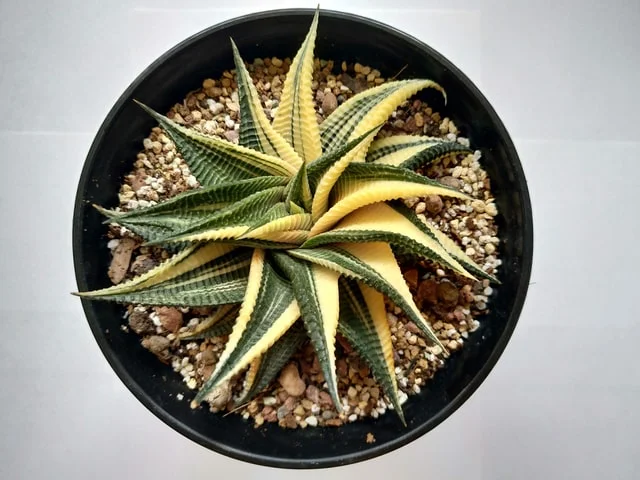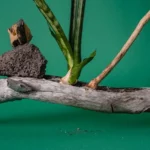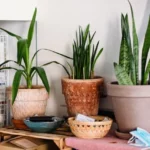The haworthiopsis limifolia, also known as the Fairies Washboard, is a species of dark green succulent native to southern Africa.
It is a compact plant that typically does not grow beyond four inches tall as a potted houseplant. It grows into the shape of a small rosette with ridges on the leaves. This texture is where it gets its nickname.
Table of Contents
How To Care For Haworthiopsis Limifolia
The small houseplant is often the perfect addition to various forms of ledges and window sills because of its size and appearance.
However, it is also low maintenance. With the correct basic care, the leaf color ranges from light to dark green, producing flowers at the top of the rosette during the summer.
What does your haworthiopsis limifolia require?
While this species of plant is low maintenance, some provisions are essential for it to be healthy. The following are the vital care requirements.
- Light Requirements: The perennial succulent grows best in bright lighting, but it can tolerate some shade when it is placed outdoors. Any sunlight indoors, although bright, should be indirect, such as in an east or west-facing window. Direct sun can cause it to burn. Leaves turn white or yellow when they are getting too much sunlight. If the plant is not getting enough light, the leaves will start to fade.
- Temperature Requirements: These plants do not like drafts or breezes and do not tolerate frost. Warmer temperatures between 18-26 degrees Celsius (65-80 degrees Fahrenheit) are preferred, but they can survive in temperatures as low as 10 degrees Celsius (50 degrees Fahrenheit) in the winter. Lower than this could result in damage.
- Humidity Requirements: The haworthiopsis limifolia does not require humidity. However, it does need a well-ventilated area. If there is little ventilation available, a fan can help to disperse the air. This circulation is especially important during the night because of its need for carbon dioxide.
- Water Requirements: Water is required more during the warmer months than the colder ones. It should only be added to the soil when it feels dry, but water should not be poured into the rosette. Water will be required much more during the summer. During the winter, it may only be needed once a month or even every two months.
- Soil Requirements: A potting mix designed for cacti or a fast-draining potting soil can be used. Anything with soil that clogs with moisture is not recommended. Additions to the mixture, such as perlite, pumice, or aquarium gravel, work well. If the caregiver notices clumping in the potting mix because of dampness, repotting in a new formula resistant to clumping may be necessary.
- Fertilizer Requirements: A cactus plant fertilizer is perfect for haworthiopsis limifolia plants. It is only required during the summer. The plant food should not be given during the winter.
Extra Tips For Haworthiopsis Limifolia
This species requires just basic care to thrive. However, at times, other issues may arise, such as an insect or illness.
Of course, there are also pruning and propagation details too. The extra tips below share some information on these topics.
Pests and Diseases
Haworthiopsis limifolia plants have very few issues with insects and illness. However, these are the main ones that may cause problems. Each of these issues is often caused by the same components – moisture and overwatering.
- Mealybugs: This insect is possibly one of the only pests to cause these succulents issues. They are attracted to moisture, and they can hide in between the leaves or the underside of them. At times, they take to settling near the soil as well. These creatures are usually white or light pink and are segmented. They tend to leave a white wax or cotton-like substance. Mealybugs feed off of the leaves, making them turn yellow and possibly brown. The insects can be physically removed or treated with insecticides. Damaged plant areas must be removed from the foliage.
- Fungus Gnats: These little pests are attracted to moisture as well. Issues with the creatures usually only occur when the soil is too moist. The little black fly-like creatures also like apple cider vinegar, making it a natural solution for an infestation. A small cup of this vinegar may be placed on the soil, attracting and eliminating the gnats. Damaged plant leaves or stems need to be removed to help the haworthiopsis limifolia become healthier again.
- Root Rot: The fungus-related disease is often caused by overwatering or the soil not draining properly. Root rot can create discoloration moving into the stem and leaves. Stunted growth may be noticed, in some cases, before the discoloration. This disease needs to be treated before it impacts the stems too much, or the plant could die. To treat, repotting is required. The plant needs to be placed into fresh soil in a new pot, with the damaged areas removed. Fungicides may also be necessary.
Pruning
Pruning is not often required for this plant. In the case of reducing the size, cutting should be done in the spring or summer. Damaged leaves can be removed at any time, using a sharp, sterile knife, at the point before the damage starts.
Repotting is typically needed with haworthiopsis limifolia. As they grow, the mother plant produces small plantlets. As a result, the plant and plantlets become too large for the pot.
The plantlets can be removed from the soil, repotting them in a small pot in the same kind of potting mix. Baby plants should be dry before planting them to prevent possible root rot.
Propagation
Propagating these succulents is most often done through offsets from the mother plant. Cutting the offsets must be completed utilizing a sharp sterilized knife or pair of scissors. The cut needs to be as close to the mother plant as possible.
The cutting should be dry before it is planted in a small pot with the same type of potting mixture as its mother.
The dryness helps to prevent the development of fungal diseases, such as root rot. The new pot can be placed in a bright, warm location, with sufficient water.
Toxicity
Haworthiopsis limifolia plants are non-toxic to humans and animals.
Photo by Nataliia Lyzhova on Unsplash


